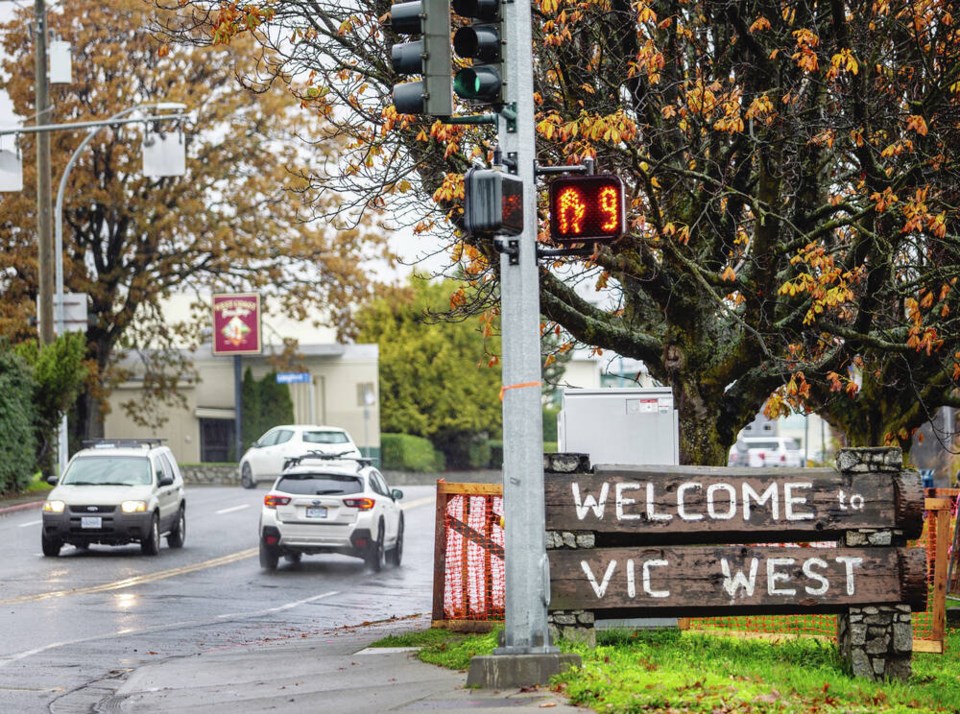The jury’s out for me about the value of those countdown timers next to pedestrian walk signals. Researching the topic over the past few weeks hasn’t given me a definite conclusion either. Some studies suggest they work, others don’t and still more are inconclusive.
What I see whenever I drive through town are walkers consistently breaking the law when they cross through intersections with pedestrian signals.
To be clear, B.C.’s Motor Vehicle Act says: When the words “Wait”, “Don’t Walk” appear or if a raised hand symbol is displayed, a pedestrian must not enter the roadway. The act also says that if you have already walked into the roadway and the signal changes you must cross as soon as possible. Following those rules means you have the right of way over all vehicles. Not a mention of a countdown timer to be found. I suppose they are meant to be a safety enhancer or at least a convenience for pedestrians. But do they work?
A 2013 study in the Journal of Injury Prevention determined that pedestrian vehicle collisions in Toronto increased 26 per cent with the advent of countdown timers. Yet a 2019 Philadelphia study shows that pedestrian-car collisions were reduced by nine per cent, rear end collisions were reduced by 12 per cent and total intersection crashes were reduced by eight per cent after the countdown timer was introduced. A 2012 Detroit study showed a whopping 73 per cent reduction in crashes with pedestrian timers, but a 2010 North Carolina study showed a statistically insignificant change when they were installed. Academia isn’t providing much help on this one.
So what do I observe? Up until last year I did a lot of driving in Vancouver and I firmly believe that the countdown timer is a major source of congestion over there. Around the Georgia and Burrard area one afternoon it took me half-an-hour to circle one block. That would still be a paltry amount of time in Beijing, where an acquaintance shared with me that it took his taxi driver 45 minutes just to make a left turn off of one of that city’s main drags.
Part of this congestion problem is that people are now using the countdown timer and not the “Don’t Walk” signal as their barometers. They keep on trucking through the “Don’t Walk” signal until the last second. If there’s a twenty or twenty-five second timer that’s a lot of impediment to driver’s trying to make a legal right turn on a red light. When peds use the counter, instead of obeying the signal, I’ve witnessed at least half a dozen Dustin Hoffman in Midnight Cowboy reenactments: “I’m walking here!” even though the “Don’t Walk” signal had been on for several seconds.
In relation to traffic problems, our CRD is no downtown Vancouver by any means but at times we come close. I’m astounded by the number of pedestrians who now no longer even flinch at a “Don’t Walk” sign and power through a crosswalk, smartphone implanted, oblivious to the rest of the world.
However, an unintended consequence of the countdown timer is the effect it has on drivers. Most of the studies I reviewed show that vehicle-on vehicle collisions are reduced, sometimes dramatically, by the pedestrian countdown timer. A driver now has second by second input as to when their light is going to change to yellow. There’s no question that some use this as a gauge to speed up and hustle through an intersection, which is never a good idea. But the stats seem pretty clear that most drivers won’t make the attempt if they see that their clock has run down.
So at the moment, unfortunately, we’re left with one of the most durable lines found in academic studies: “… more study is required.” That’s too bad because we need a clearer perspective on causation as there’s a lot at stake. ICBC has recently warned us to take extra care around pedestrian collisions, especially at this time of year with fewer hours of daylight. On average 2,400 pedestrians are injured in these types of collisions between October and January with 79 per cent of them occurring at intersections.
Driver inattention and failing to yield are listed as major causes in pedestrian collisions but I can’t help feeling that there’s an important intangible which is being ignored: Driver frustration.
A driver who is agitated or angry because they were cut off by an oblivious or indifferent pedestrian stepping out in front of them, maybe more than once, is not a good person to share the road with.
I hope at some time there’s both a capacity and a willingness to study this situation locally, in detail. A clear understanding about the true value of countdown timers is needed because I’m sensing a lot of frustration out there.



